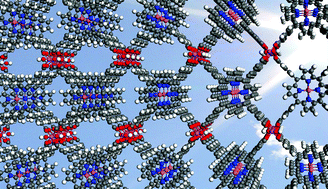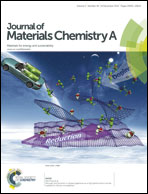Electronic structure of porphyrin-based metal–organic frameworks and their suitability for solar fuel production photocatalysis†
Abstract
Metal–organic frameworks (MOFs) can be exceptionally good catalytic materials thanks to the presence of active metal centres and a porous structure that is advantageous for molecular adsorption and confinement. We present here a first-principles investigation of the electronic structure of a family of MOFs based on porphyrins connected through phenyl-carboxyl ligands and AlOH species, in order to assess their suitability for the photocatalysis of fuel production reactions using sunlight. We consider structures with protonated porphyrins and those with the protons exchanged with late 3d metal cations (Fe2+, Co2+, Ni2+, Cu2+, Zn2+), a process that we find to be thermodynamically favorable from aqueous solution for all these metals. Our band structure calculations, based on an accurate screened hybrid functional, reveal that the bandgaps are in a favorable range (2.0 to 2.6 eV) for efficient adsorption of solar light. Furthermore, by approximating the vacuum level to the pore centre potential, we provide the alignment of the MOFs' band edges with the redox potentials for water splitting and carbon dioxide reduction, and show that the structures studied here have band edges positions suitable for these reactions at neutral pH.


 Please wait while we load your content...
Please wait while we load your content...